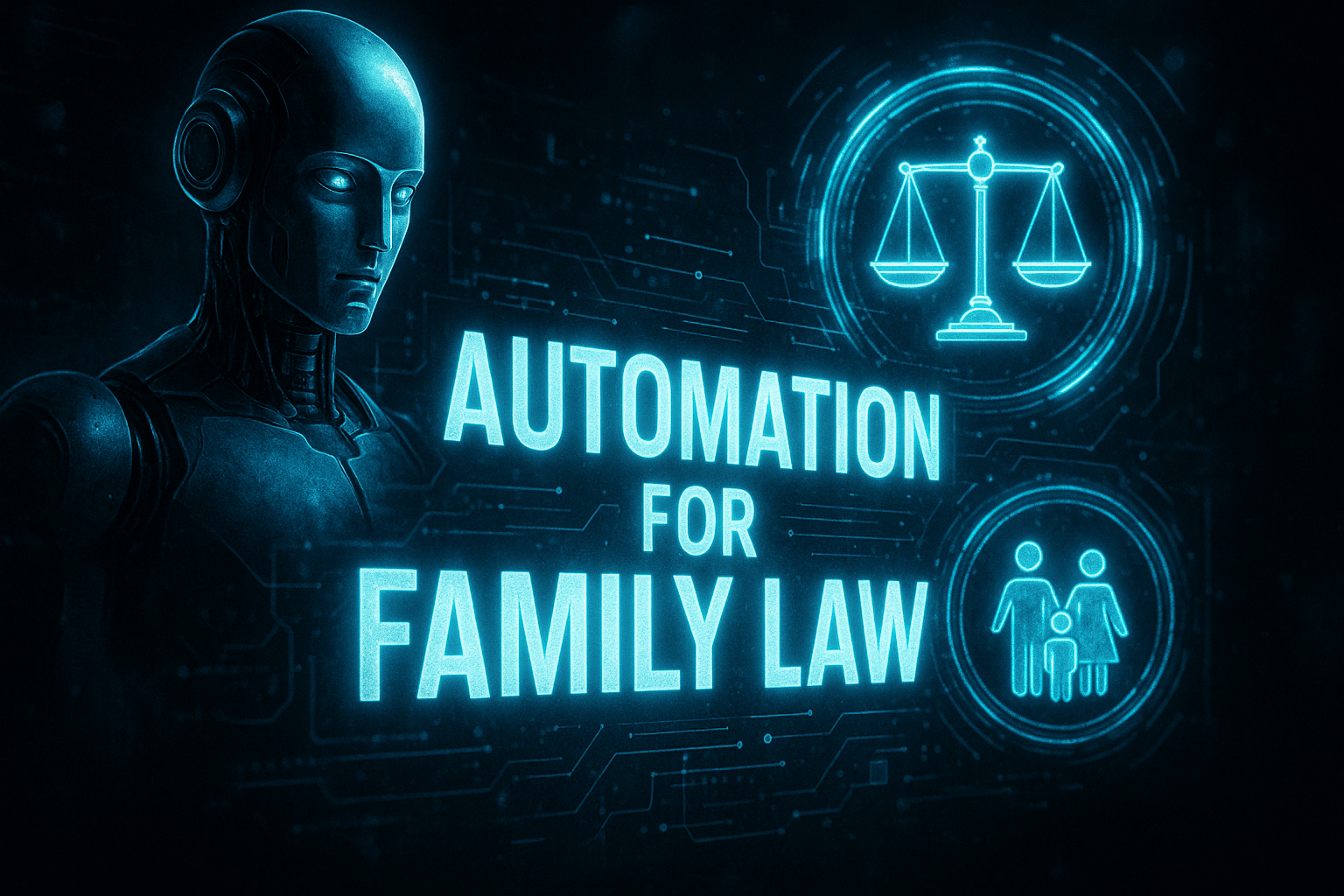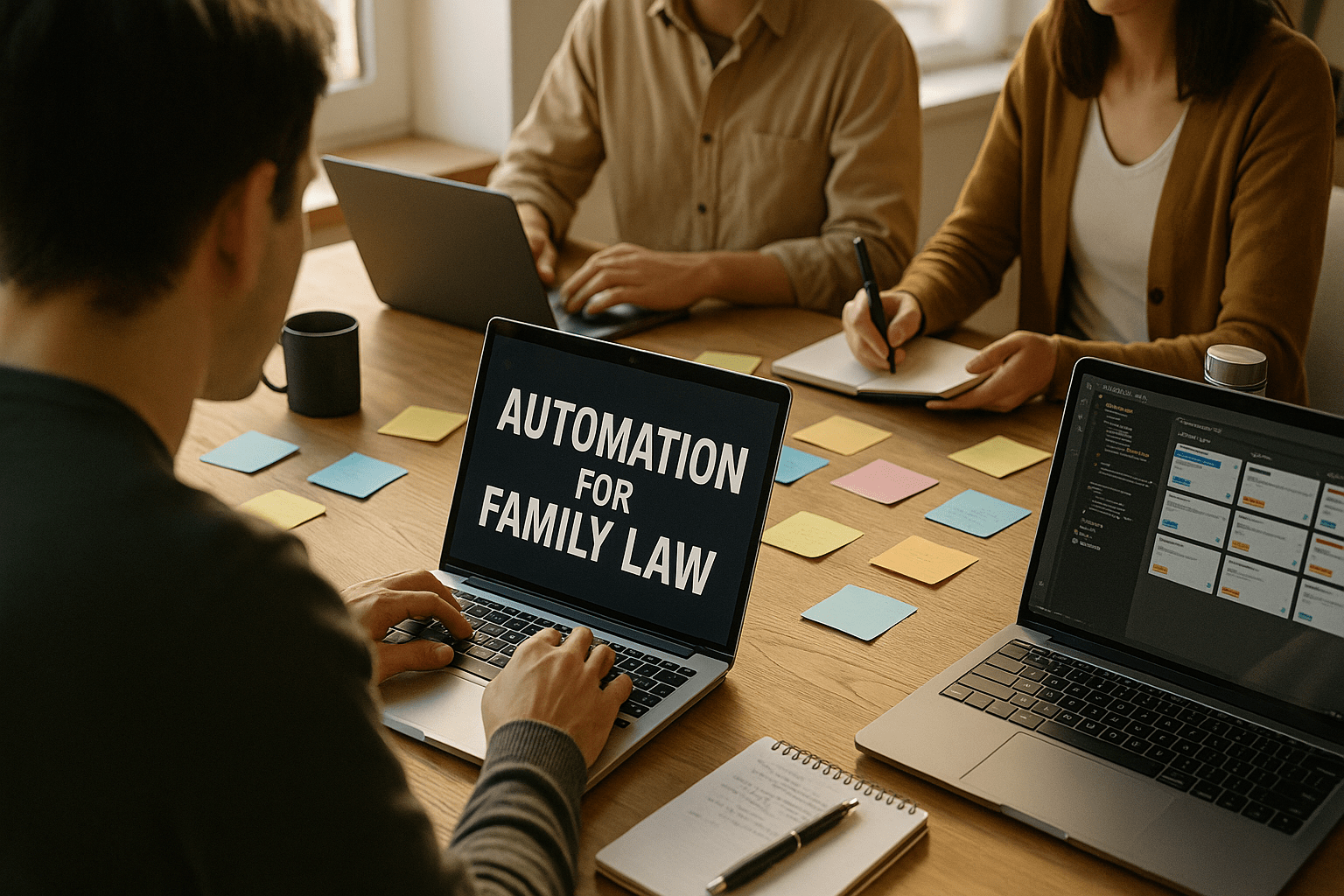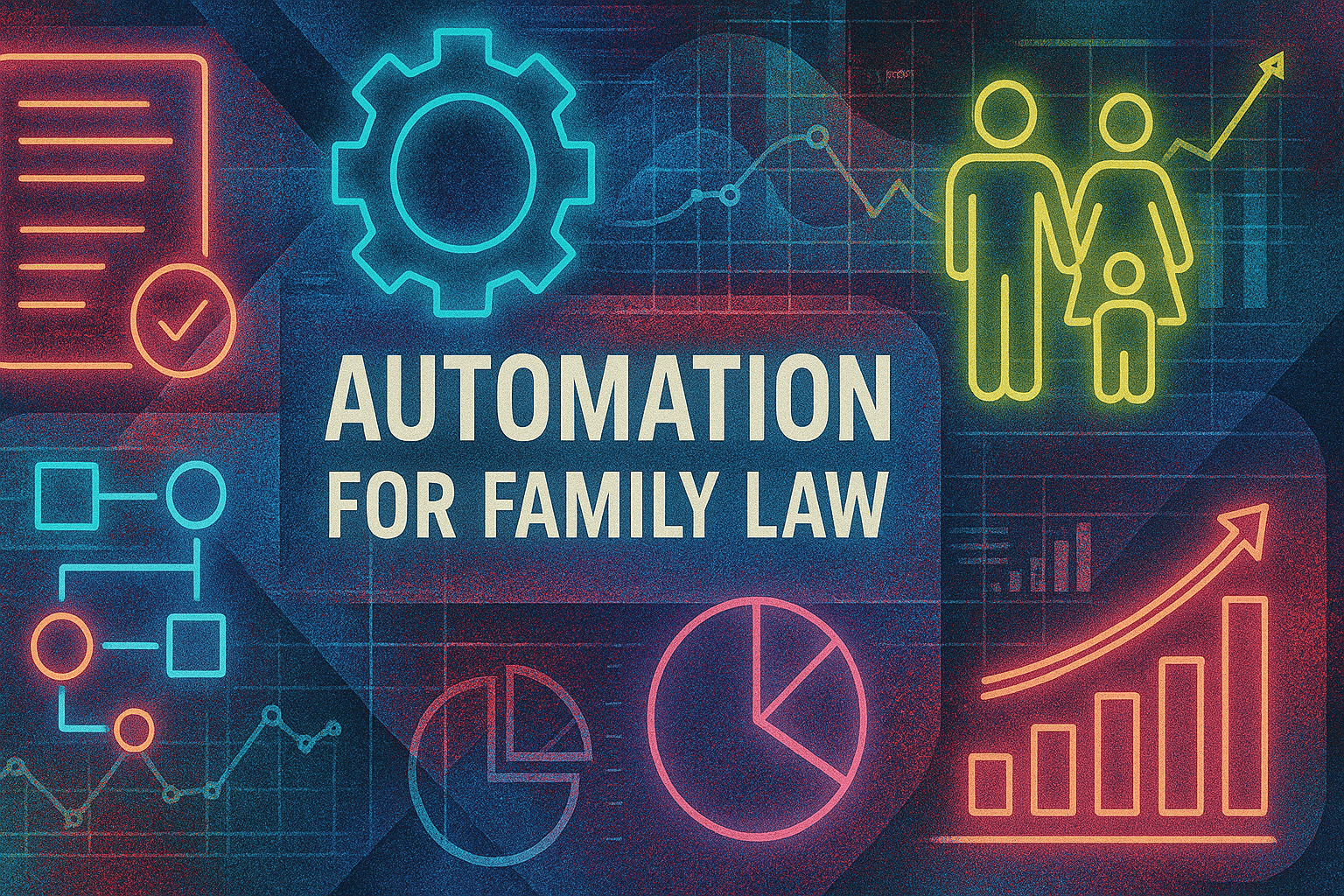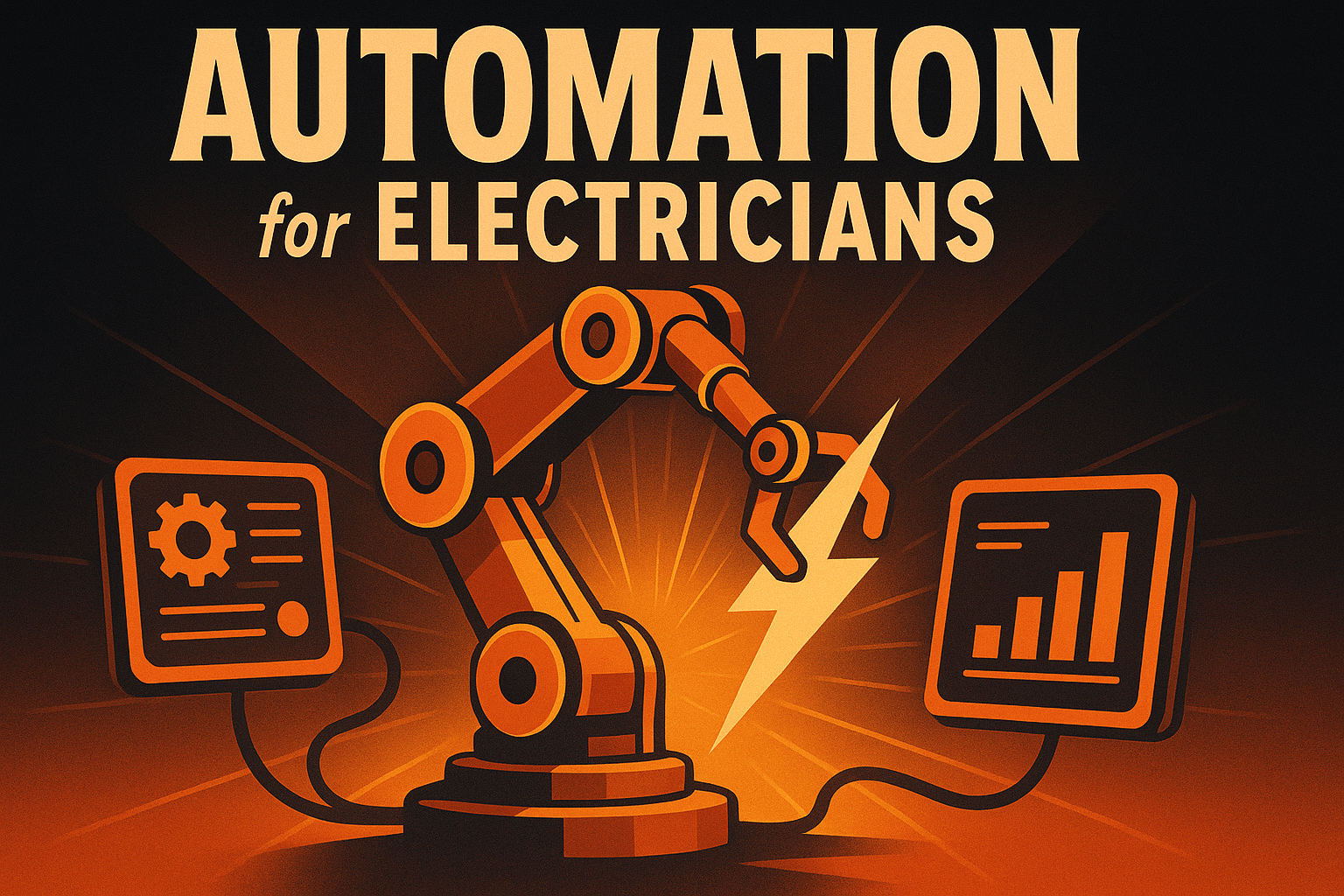How Automation for Family Law Transforms Client Intake & Case Management in 2026
by Design Delulu Editorial · October 8, 2025

Family law practices lose an average of 15-20 hours per week on repetitive administrative tasks that could be automated. From client intake forms to document assembly, court deadline tracking to billing workflows, automation isn't just a productivity tool—it's becoming the competitive advantage that separates thriving practices from overwhelmed ones. In 2026, the question isn't whether to automate, but how quickly you can implement systems that let your team focus on what matters: winning cases and serving clients.
The stakes are higher than ever. Clients expect instant communication, transparent processes, and seamless experiences that rival consumer tech companies. Meanwhile, family law attorneys face mounting pressure from case complexity, regulatory compliance, and talent retention challenges. Automation for family law addresses all three simultaneously by eliminating bottlenecks, reducing errors, and creating scalable systems that grow with your practice. The firms implementing these solutions now are capturing market share while their competitors drown in paperwork.

Why Family Law Practices Need Automation Now
Family law operates in a perfect storm of challenges that make automation essential. Unlike other practice areas, family law combines emotional client situations with document-heavy processes, strict court deadlines, and high-touch communication needs. A single divorce case can generate hundreds of documents, dozens of court dates, and constant status updates across multiple stakeholders.
Traditional manual processes create three critical pain points. First, administrative tasks consume billable hours—paralegals spend up to 40% of their time on data entry and document preparation instead of substantive legal work. Second, human error in deadline tracking or document filing can trigger malpractice claims or case dismissals. Third, inconsistent client communication leads to dissatisfaction, negative reviews, and lost referrals in an industry where reputation drives growth.
Automation solves these problems systematically. Client intake forms automatically populate case management systems, eliminating duplicate data entry. Workflow triggers send deadline reminders days or weeks in advance, with escalation protocols for urgent matters. Template-based document assembly ensures consistency while reducing drafting time by 70%. Email sequences keep clients informed at every case stage without manual follow-up. The result: practices that run smoother, scale faster, and deliver better client experiences.
Core Automation Systems for Family Law Practices
Successful automation for family law builds on four interconnected systems, each addressing specific operational challenges while integrating seamlessly with the others.
Client Intake & Lead Management: Automated intake transforms the first client interaction from a administrative burden into a strategic advantage. Online intake forms with conditional logic collect comprehensive information while feeling conversational. Responses flow directly into your case management system, creating case files, conflict checks, and initial timelines automatically. Lead scoring algorithms identify high-value prospects, while automated nurture sequences convert consultations into retained clients. Practices implementing automated intake see 35% faster case onboarding and 25% higher consultation-to-retention rates.
Document Assembly & Management: Family law relies on dozens of standard documents—petitions, stipulations, financial disclosures, parenting plans, and more. Automation platforms with robust template libraries let staff generate customized documents in minutes instead of hours. Smart fields pull data from case files to populate forms automatically, reducing errors and ensuring consistency. Version control and approval workflows maintain quality standards while accelerating production. Integrated e-signature capabilities eliminate printing, scanning, and mailing delays. The time savings compound: what once took a paralegal 3 hours now takes 15 minutes.
Calendar & Deadline Management: Missing a court deadline can destroy a case. Automated calendar systems integrate with court e-filing platforms to capture deadlines instantly, then create multi-layered reminder systems. Thirty days before a hearing, the system generates a preparation checklist. Two weeks out, it triggers document assembly workflows. Three days before, it sends final confirmation to all parties. Backup calendaring ensures redundancy, and escalation protocols alert supervisors if tasks remain incomplete. This systematic approach reduces missed deadlines by 95% while eliminating the anxiety of manual deadline tracking.
Client Communication & Case Updates: Family law clients need frequent reassurance and updates. Automated communication systems send triggered messages at key case milestones—when documents are filed, when court dates are set, when opposing counsel responds. Personalized email sequences answer common questions proactively, reducing inbound calls by 40%. Client portals give 24/7 access to case status, documents, and billing information, improving transparency and trust. Attorneys can focus communication on strategic discussions instead of routine status updates, improving both efficiency and client satisfaction.

Implementation Roadmap: From Planning to Optimization
Successful automation implementation follows a structured four-phase approach that minimizes disruption while maximizing adoption and results.
Phase 1 - Discovery & Strategy (Week 1-2): Begin with comprehensive workflow mapping. Document current processes for intake, case management, document production, and client communication. Identify bottlenecks, pain points, and manual handoffs that create delays or errors. Interview staff at every level to understand their daily challenges and wish lists. Analyze your technology stack to understand integration requirements and identify gaps. Define clear success metrics: hours saved per case, reduction in missed deadlines, improvement in client satisfaction scores, increase in case capacity per attorney. This foundation ensures automation aligns with actual operational needs rather than theoretical ideals.
Phase 2 - Platform Selection & Blueprint (Week 3-4): Choose automation tools based on family law-specific requirements. Evaluate case management platforms with built-in workflow automation like Clio, MyCase, or PracticePanther. Assess document automation solutions such as HotDocs or GhostDraft that integrate with your case management system. Consider client communication platforms like Lawmatics or lead management tools with family law templates. Create detailed blueprints for each automated workflow, including trigger conditions, data mappings, approval gates, and exception handling. Design user interfaces and training materials that make adoption easy for staff at all technical skill levels.
Phase 3 - Build, Test & Launch (Week 5-6): Implement automation systems in a controlled rollout. Start with one high-impact workflow—typically client intake or document assembly—to demonstrate quick wins and build momentum. Configure systems meticulously, testing every conditional branch and data mapping. Run parallel processes initially: maintain manual workflows as backup while validating automated outputs. Train staff in small groups with hands-on practice sessions. Create quick-reference guides and video tutorials for common tasks. Gather feedback aggressively and iterate rapidly on pain points. Once the pilot workflow runs smoothly for two weeks, expand to additional use cases.
Phase 4 - Optimization & Scale (Week 7-8+): Monitor performance metrics weekly. Track time savings, error rates, staff adoption levels, and client feedback. Identify friction points where staff revert to manual processes and address root causes. Expand automation to adjacent workflows, leveraging templates and learnings from initial implementations. Establish governance processes for maintaining automation systems as staff, procedures, and technology evolve. Create a continuous improvement culture where staff regularly suggest workflow enhancements. The most successful practices treat automation as an ongoing capability rather than a one-time project, continuously finding new opportunities to eliminate waste and improve service delivery.
Measuring Success: KPIs That Matter for Family Law Automation
Effective automation programs track both operational efficiency gains and strategic business outcomes. Start with time-based metrics: hours saved per case, reduction in administrative time as percentage of total staff hours, and decrease in time from intake to case file creation. These quantify direct productivity improvements and often show 40-60% reductions in administrative overhead within the first quarter.
Quality metrics reveal automation's impact on accuracy and compliance. Track error rates in document production, missed deadline incidents, and data entry mistakes. Monitor client complaint rates and malpractice near-misses related to administrative failures. Best-in-class practices see 80-95% reduction in these quality issues after implementing automation.
Business growth indicators demonstrate automation's strategic value. Measure cases per attorney, revenue per staff member, and client satisfaction scores. Track consultation conversion rates, referral rates, and online review ratings. Monitor staff turnover and time-to-productivity for new hires—automation dramatically improves both by reducing frustration and simplifying training. The most compelling metric: practices with mature automation systems typically handle 30-50% more cases with the same headcount while maintaining or improving quality and client satisfaction.

Best Practices for Family Law Automation Success
- Start with your biggest bottleneck: Don't try to automate everything at once. Identify the single process causing the most pain or consuming the most time, automate it completely, celebrate the win, then move to the next priority.
- Design for the least technical user: Automation fails when staff can't or won't use it. Create interfaces and workflows so intuitive that your least tech-savvy team member can execute them confidently without support.
- Build in quality controls: Automation speeds up processes, but speed without accuracy creates bigger problems. Include review steps, approval gates, and validation rules that catch errors before they become client-facing issues.
- Maintain the human touch: Automate routine tasks and communications, but preserve personal interaction for emotionally sensitive moments. Clients don't want automated responses when they're discussing custody arrangements or asset division.
- Document everything: Create comprehensive documentation for every automated workflow—what it does, how it works, when to use it, and how to troubleshoot common issues. This enables self-service problem-solving and ensures sustainability as staff changes.
- Plan for exceptions: No automated workflow handles 100% of cases. Build clear escalation paths for edge cases, complex situations, or system failures so work never falls through the cracks.
- Integrate ruthlessly: Disconnected systems create data silos and manual handoffs that undermine automation benefits. Prioritize platforms that integrate seamlessly with your existing technology stack, or be prepared to consolidate tools.
- Train continuously: Schedule regular refresher training, share workflow updates, and celebrate staff members who leverage automation effectively. Create a culture of continuous learning and improvement.
Industry-Specific Considerations for Family Law Automation
- Privacy and confidentiality are paramount: Family law cases involve highly sensitive information about relationships, finances, children, and personal circumstances. Ensure all automation platforms meet legal industry security standards, offer encryption at rest and in transit, and provide granular access controls. Verify that automated communication systems never expose confidential information in subject lines or previews. Build consent and disclosure workflows that comply with ethical rules and privacy regulations.
- Emotional intelligence matters: Unlike transactional practice areas, family law clients are often experiencing trauma, grief, anger, or fear. Automated communications must balance efficiency with empathy. Use warm, supportive language in templates. Avoid automated messages during predictably stressful moments like immediately after contested hearings. Train staff to recognize when automated workflows should be overridden in favor of personal outreach.
- Jurisdictional variations require flexibility: Family law procedures, forms, and requirements vary significantly by state and even by county. Choose automation platforms with jurisdiction-specific template libraries or easy customization capabilities. Build location-based routing rules so cases automatically use correct forms and procedures based on filing jurisdiction. Maintain separate workflow versions for different courts when necessary.
- Financial complexity demands sophistication: Family law cases involve detailed financial analysis—income calculations, asset valuations, support computations, and equitable distribution. Integrate automation with financial software, connect to data sources like tax returns and bank statements, and build calculators that apply state-specific formulas automatically. This reduces errors in critical financial components while accelerating case preparation.
- Co-parent communication needs special handling: Many family law clients require ongoing communication channels with former partners regarding children. Consider automation tools that facilitate structured co-parent communication, document exchanges, and scheduling while maintaining appropriate boundaries and creating records for potential court review.
Frequently Asked Questions
Let’s level up your Family Law business
Need services that actually move the needle for Family Law? See our approach, pricing, and timelines—then book a quick call.
Additional Resources
- Schedule Your Automation Strategy Session
Book a complimentary 30-minute consultation to discuss your practice's specific automation needs, challenges, and opportunities. We'll assess your current workflows and outline a customized roadmap for implementation.
- View Our Family Law Automation Portfolio
Explore real-world automation implementations for family law practices, including case studies, workflow diagrams, and measurable results from firms that transformed their operations with our systems.
- Free Family Law Automation Tools & Resources
Access our library of free automation resources including workflow templates, intake form builders, ROI calculators, and implementation checklists designed specifically for family law practices.
Related Reading

Discover how automation for electricians streamlines scheduling, invoicing, lead tracking, and customer follow-ups to boost revenue and efficiency. Get started today.

Discover how automation streamlines furniture & home decor operations with GA4 tracking, attribution modeling, and data-driven dashboards. Get your 90-day implementation roadmap.
